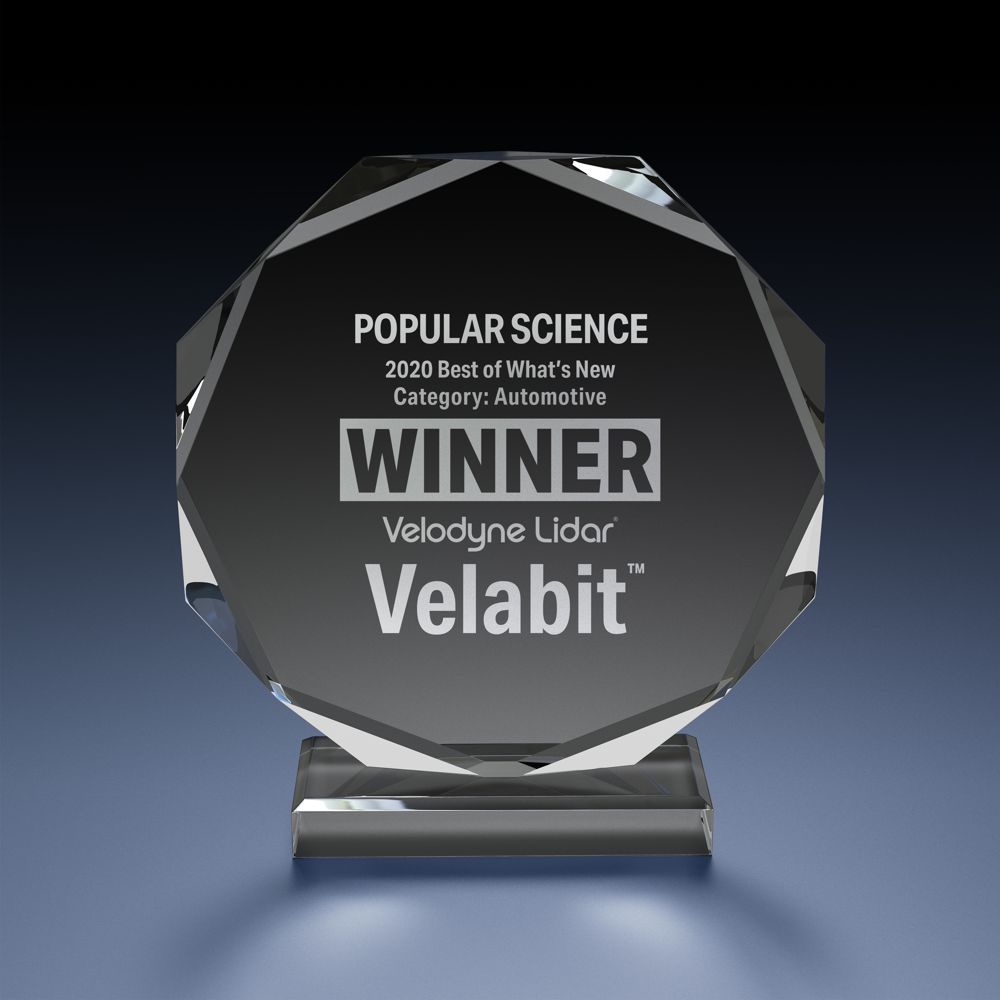Velodyne Lidar Velabit wins Best of What’s New Award from Popular Science
Velodyne Lidar has announced its Velabit™ lidar sensor was named a winner in the Best of What’s New awards by Popular Science.
The Velabit, Velodyne’s smallest sensor, brings new levels of versatility and affordability to 3D lidar perception. It is a cornerstone solution in Velodyne’s mission to transform lives by advancing safe mobility and smart communities through access to their innovative lidar technologies.

“Popular Science has an esteemed legacy of reporting on ground-breaking innovations and discoveries,” said Anand Gopalan, CEO, Velodyne Lidar. “Velodyne is honoured to have the Velabit recognized as a leading innovative product by the magazine’s editors. With its combination of performance, size and price position, the Velabit is a breakthrough sensor that can be a catalyst for a new era of autonomous solutions on a global scale.”
The Velabit is engineered to be an optimal automotive grade lidar solution for Advanced Driver Assistance Systems (ADAS) and autonomous vehicles. It can enable robust perception coverage for Blind-Spot Monitoring, Cross Traffic Detection, and Pedestrian Automatic Emergency Braking. This mid-range sensor can be combined with other Velodyne lidar technologies, such as the Velarray H800™, for high-speed operation or function as a standalone lidar solution in low-speed applications. The Velabit can also be integrated with Velodyne’s Vella™ software suite to help advance the full spectrum of vehicle safety features.

The Velabit addresses the cost, safety and design challenges of autonomous solutions while delivering strong sensor performance. This solid-state lidar sensor is highly configurable for specialized use cases and can be embedded almost anywhere within vehicles, robots, unmanned aerial vehicles (UAV) and infrastructure. Leveraging Velodyne’s innovative design technology and manufacturing partners, the Velabit is designed to be easy to manufacture at mass production levels.
“The Best of What’s New Awards showcase the year’s greatest feats of human ingenuity,” said Popular Science Editor-in-Chief Corinne Iozzio. “Even in a year like 2020, innovation has helped us glimpse a future that’s safer, smarter, and more enjoyable than we might have thought possible. This collection, which includes everything from a new generation of Mars explorers to ultra-hygienic print-to-order eyeshadows, is full of items we’re proud to call the Best of What’s New.”

Since 1988, the editors of Popular Science have reviewed thousands of products in search of the top 100 tech innovations of each year – breakthrough products and technologies that represent a significant advancement in their categories. Best of What’s New Awards are presented to 100 new products and technologies in 10 categories: Aerospace, Automotive, Engineering, Entertainment, Gadgets, Health, Home, Personal Care, Recreation and Security.



















